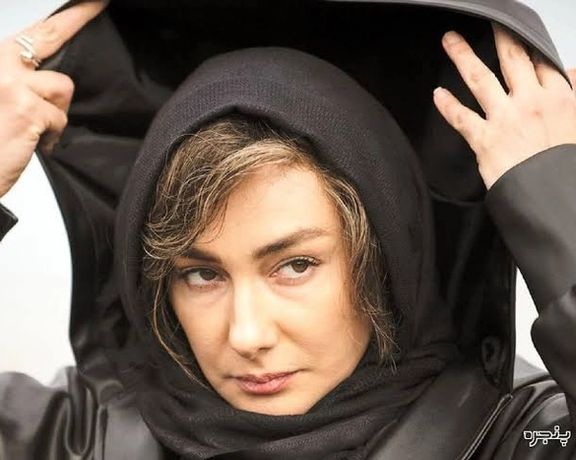Jailed Iranian Protestor Dies Suddenly In Prison

A young Iranian protester who was one of the icons of the Women, Life, Freedom movement has died in prison following a "seizure," Iranian judiciary claimed .

A young Iranian protester who was one of the icons of the Women, Life, Freedom movement has died in prison following a "seizure," Iranian judiciary claimed .
Javad Rouhi, who was 35 years old, was incarcerated in northern Nowshahr prison and had been sentenced to death. The Supreme Court overturned his death sentence and he was awaiting re-sentencing. had previously reported extensive accounts of severe physical and psychological abuse during Rouhi's detention.
Majid Kaveh announced the news of his death on social media (X, formerly known as Twitter). Rouhi's family also confirmed that he had died but there remain differing accounts regarding the circumstances of his death. Official reports say that he had a seizure at 3:45am on Thursday and was urgently transferred to Shahid Beheshti Hospital in Nowshahr where he was pronounced dead. Other activist reports suggest that he was killed by the regime.
Tasnim News Agency, affiliated with the IRGC, reported that a judicial order had been issued to inspect the prison's CCTV cameras, document the deceased's personal belongings including notes and medications, and conduct a post-mortem examination and toxicology tests to ascertain the cause of death.
Rouhi was arrested during the Woman, Life, Freedom protests in September 2022 and was received a triple death sentence, which was overturned by the Supreme Court.
Rouhi is the latest name added to the long list of political and ideological prisoners who have lost their lives in Iranian prisons in recent years.
Amnesty International reported in September 2021 that it had documented at least 72 individuals who had died in Iranian prisons due to various forms of torture and mistreatment since January 2010.

Protesting workers at Iran's Arak Machinery Manufacturing who are refusing to work over wage disputes reached new levels of intensity on Thursday.
According to the Telegram channel Bazaar Civil Protest, the worker's protest at the factory, also known as Machine Sazi Arak, gained momentum as the strikers insist that they will not stop until they receive their rightful wages.
Over the past few months, the facility's workforce has staged several strikes over low wages - typically less than $200 per month - and other labor-related concerns. On April 21st, they synchronized their strike action with workers from at least 16 oil and industrial units as a collective and symbolic protest.
Within the past year, Iran has witnessed over 1,600 labor rallies and strikes. However, the Islamic Republic's security and judicial authorities have responded by summoning, arresting, and incarcerating numerous labor activists, aiming to quell dissent.
Authorities contend that the orchestrated strikes are instigated by anti-regime groups, an often-used excuse that only undermines the legitimacy of workers' demands without addressing them. Persistent strikes add to escalating tensions and Iran’s ailing economy but with no action taken regarding workers’ demands, there seems to be no imminent resolution in sight.

Actress Hanieh Tavassoli says that religious authority and the power of clericalism is losing its grip in Iran, commenting on Kamal Tabrizi's 2004 film Marmoulak (The Lizard).
Tavassoli hailed Tabrizi's film as one of Iran's most significant comedic works saying, "Your words are so true today, Mr. Tabrizi. It's evident that the perspective on clericalism has shifted. It's a different era."
These comments come after Tabrizi’s recent interview about the evolving outlook of today's generation towards the dominant clerical authority in Iran. "Today's generation has a different perspective on the clerical class that is not in line with the world of Marmoulak and its satire,” he said.
Marmoulak, released in 2004, offers a portrayal of humorous situations, including a character adopting clerical attire for thieving purposes. However, despite its sarcastic undertones, the film ultimately defends the clergy and their societal role.
Tavassoli further expressed her thoughts on her Instagram story, stating, "Our cinema is far behind today's intelligent, rebellious, and courageous youth and society. Cinema should freely follow this generation's footsteps to catch up with them in a few years. Everything comes down to these three shining words: Woman, Life, Freedom."
The ongoing nationwide Woman, Life, Freedom protests have seen demonstrators expressing their sentiments against the clergy and defiantly removing the hijab as a form of protest.
Since the 1979 revolution, the clergy have gained increasing power in Iran. However, discontent has surged in recent years, particularly amid waves of protests concerning economic, political, and civil rights issues.

Mostafa Rajai Langroudi, a weightlifter has been banned from the sport after posing for a photograph with an Israeli at the World Master Weightlifting Championships in Poland.
Sajjad Anoushiravani, the head of the Weightlifting Federation announced on Tuesday that Rajai has been banned from the sport for life after the podium photo was published. Simultaneously, Anoushiravani made the decision to dissolve the veterans' committee of the federation.
Anoushiravani said, "Upon becoming aware of this inexcusable incident, stringent actions were taken against those involved. The athlete responsible has received a lifetime ban, and upon conducting thorough investigations, resolute measures will be taken against all individuals implicated. Furthermore, effective immediately, all operations of the veteran athletes' committee will be terminated."
The Islamic Republic's anti-Israel policy has driven a significant number of Iranian athletes to refrain from competing against Israeli counterparts, often citing various pretexts. This stance has consequently led to the defection of numerous Iranian athletes seeking asylum in other countries.
While no official legislation prohibits Iranian athletes from playing against Israelis, pressure from federation officials often coerces athletes into intentionally losing matches, forfeiting games, or claiming injuries to evade encounters with Israeli competitors. Supreme Leader Ali Khamenei has consistently applauded Iranian athletes who opt out of competing against Israelis. In September 2021, he explicitly encouraged them to continue this stance even in the face of potential sanctions from international sports bodies.
Over the past few years, approximately 30 Iranian athletes have defected from national teams and sought asylum in foreign nations. Notable examples include Judo champion Saeid Mollaei and Greco-Roman wrestler Ali Arsalan.

Women's rights activists imprisoned in Gilan province in northern Iran have been subjected to severe beatings and mental abuse, Iran International can reveal.
According to information obtained by Iran International, Sara Jahani, a doctor at a hospital in Rasht, refused to share her phone's passcode with authorities and was beaten for this resistance.
Meanwhile, in the Ministry of Intelligence's detention center, Hooman Taheri, a Gilan-based activist, also suffered repeated severe assaults. Days after being transferred to the public ward, he still bears visible signs of a broken tooth, extensive facial swelling, and bruises on his neck and body.
It has been reported that some detainees have been denied communication privileges and visitation rights to prevent the disclosure of abuse.
Last Thursday, the Islamic Republic's security forces arrested several women's rights activists in the cities of Rasht, Fooman, Anzali, and Lahijan.
Condemning these detentions, hundreds of activists have called for their immediate release.
As the anniversary of Mahsa Amini's death at the hands of the hijab police approaches, the government's efforts to suppress activists, students, and teachers have escalated. Security agencies have recently been summoning and issuing threats over the phone to dozens of students across Iranian universities.
Various reports also highlight security pressure on families of those killed in the uprising, aiming to prevent gatherings on the anniversary of their children's deaths as well as desecration of victims’ graves.

Iran’s regime has always pressured female athletes to abide by strict hijab rules during international games, but many are now refusing to obey despite repercussions.
Just last week, members of Iran's national women's muay thai team boldly challenged the regulations by competing unveiled at the Asian Championships held in Tashkent, Uzbekistan's capital.
This courageous act has triggered an outcry among hardliners, with some officials even disputing the team's official representation of the Islamic Republic. Others are calling on the Ministry of Sports to take decisive action to quell such open defiance.
The government has proposed a bill that, if approved, will impose heavy fines and other punishments on celebrities including athletes who appear unveiled in public.

Over the past few years, several female athletes have chosen to compete unveiled at international events, seeking asylum abroad to avoid being compelled to return to Iran and face punishment. Notably, 19-year-old Dorsa Derakhshani, an International Master and Woman Grandmaster since 2016, was barred from the national team after refusing to wear a headscarf at the 2017 Gibraltar Chess Festival. She was then a temporary resident of Spain.
"Minutes before a match the deputy chairman of the federation would constantly whisper in my ear to be careful not to let my head cover to drop," Parisa Jahanfekrian, former weightlifting champion who is now living in Germany, told Iran International. Once in very warm weather he told me at least ten times to tuck my hair under my head cover only two minutes before the match.
"There, I was constantly thinking about the consequences if my head cover slipped back instead of thinking how to hold the halter and how to carryout my technic," she said.
It was agonizing to conform with all the dos and don'ts that were imposed on female athletes, Jahanfekrian told Iran International, adding that there would always be meetings before international competitions about hijab.

"They demanded that we always was wore a long tunic (called maanto in Iran) and a pullover headscarf with stitched front (called Maghna'e in Iran) when we left our rooms during our stay abroad.
Female athletes who defy hijab rules receive substantial support and are often hailed as heroes by the public. However, they also endure significant pressure from the authorities.
During the anti-government protests of the previous year, climber Elnaz Rekabi made a bold statement by discarding her hijab during the finals of a competition in South Korea, as an act of solidarity with the Woman, Life, Freedom protesters. She received a warm welcome upon her return to Iran after the competition.

Soon after, state media released a video interview with her at the airport arrival hall. In the interview, she referred to her decision to appear without a hijab as "inadvertent." Many speculated that her statements were made under the pressure of regime agents. Social media users criticized the regime's attempts to undermine her convictions, noting that their efforts had ultimately failed.
People on social media said the regime had tried “to break this brave woman,” force her to repudiate her own convictions, and discredit her among hundreds of thousands of young girls who admired her “but as always, they failed.”
The regime has since then been faced with the dilemma of whether to allow women's participation at international competitions and ignore their defiance or keep them home.
The rule is that arms must be always covered to the wrist and legs to the ankle. Roya Mahboodi, an Asian Women’s Arm-Wrestling champion told Etemad daily in June that a government official banned the sport for some period of time because the wrist and a part of the elbow could be seen during matches.
She recounted how wearing a shaal (normal rectangular scarf), which lets more hair to cascade around the face and in the back, was banned whereas maghna'e tightly frames the face and comes down to the chest. Shaal has been the head cover of choice for many Iranian women who do not believe in wearing hijab but have to abide by the hijab rules.






